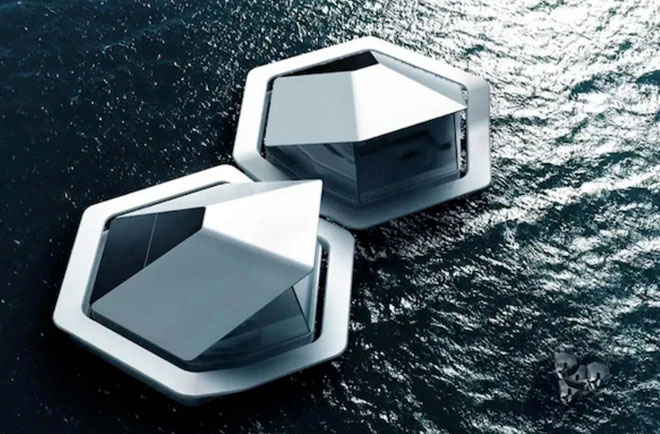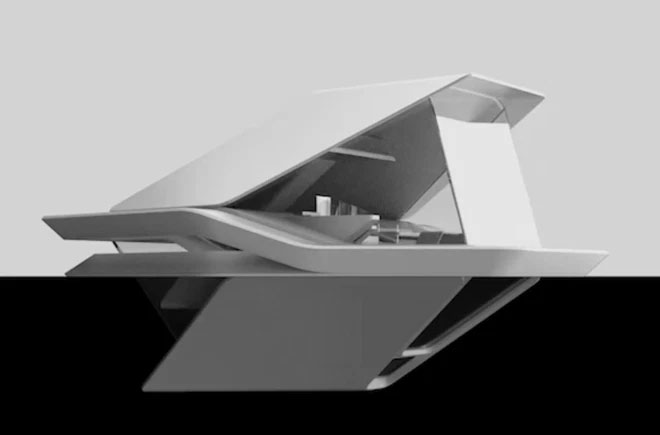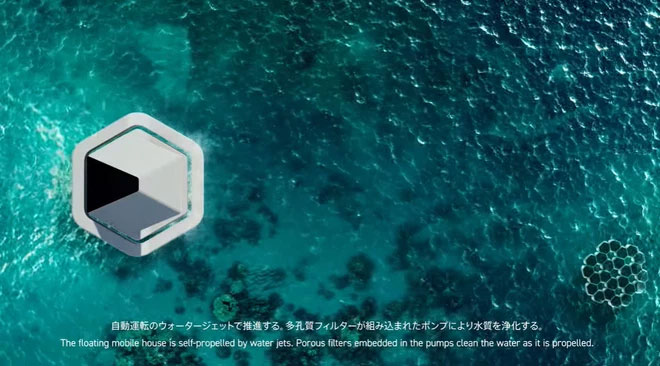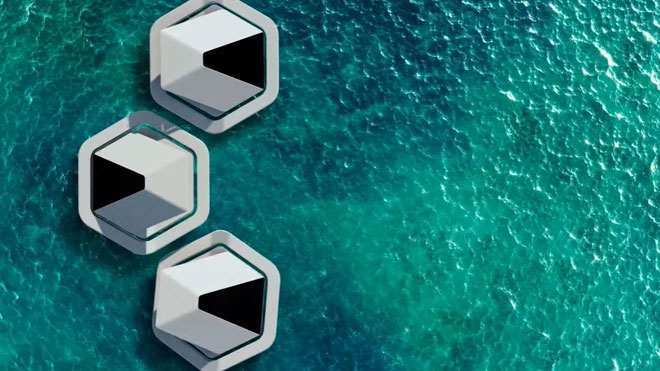Humans are continuously exploring housing solutions for the future, especially if climate change reaches extreme levels and people find themselves without a place to live on land.
Climate change, melting ice, and the thermal expansion of warming oceans can lead to rising sea levels, posing a significant threat to human civilization. The global average sea level has risen by approximately 21 to 24 cm since 1880 and continues to rise at an alarming rate each year.

Floating housing model in collaboration with science fiction writers.
A new project named “One Day, 2050” by Sony envisions the future and how people will live in Tokyo by 2050. One of the project’s outcomes is a model for floating housing developed in collaboration with science fiction writers.
The company explains that the project encompasses theme keywords such as “2050,” “Tokyo,” and “romantic,” where Sony’s designers and science fiction writers held workshops to explore life, living environments, senses, and states of happiness in 2050. These creative efforts contributed to a series of design prototypes and science fiction short stories.
Each design prototype highlights an idea for a service or product related to the theme’s message.
“Living environments” feature nomadic communities on the sea, coexisting with nature. Imagining life in the near future, coastal cities could be replaced by floating homes for climate refugees and those displaced by rising sea levels. With no land to inhabit, people may have to relocate to shell-like homes drifting on the ocean, searching for food and safe shelter.
According to Sony, these floating shell homes with a double structure will remain stable even during storms. The outer shell is designed to withstand waves and reduce shaking. Inside this home is where people will live.

Floating shell homes will remain stable even during storms.
The spacious cabins have three levels for living both above and below water, all connected by stairs. Since the project and prototypes are still in the conceptual stage, the amenities within the cabins are not described in detail. However, we can imagine they will feature designs and interiors reminiscent of bunkers from science fiction films.
To navigate through the water, these homes utilize water jets. In addition to batteries located at the bottom of the house and an energy tank, the shell is equipped with solar panels on the roof to harness solar energy. Furthermore, the house will self-purify water with a filtration pump system while moving across the ocean.


These homes will have designs and interiors reminiscent of bunkers from science fiction films.
When two or more homes come together, they can form a beehive-like structure and even create a “sea city.” When connected, they can also transfer energy from one energy tank to another at any time, forming an electrical system.


















































